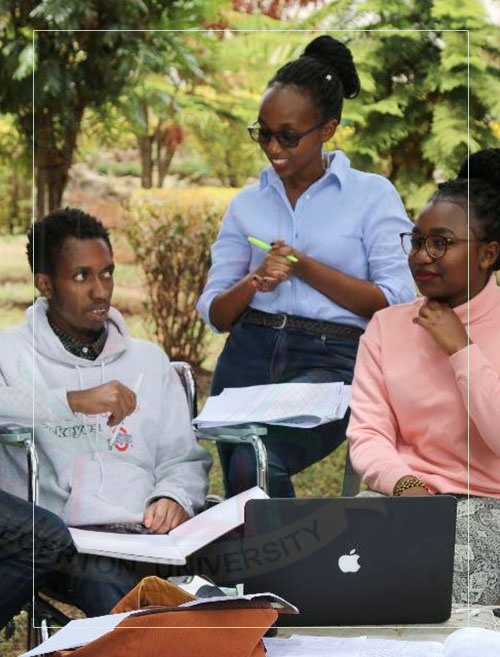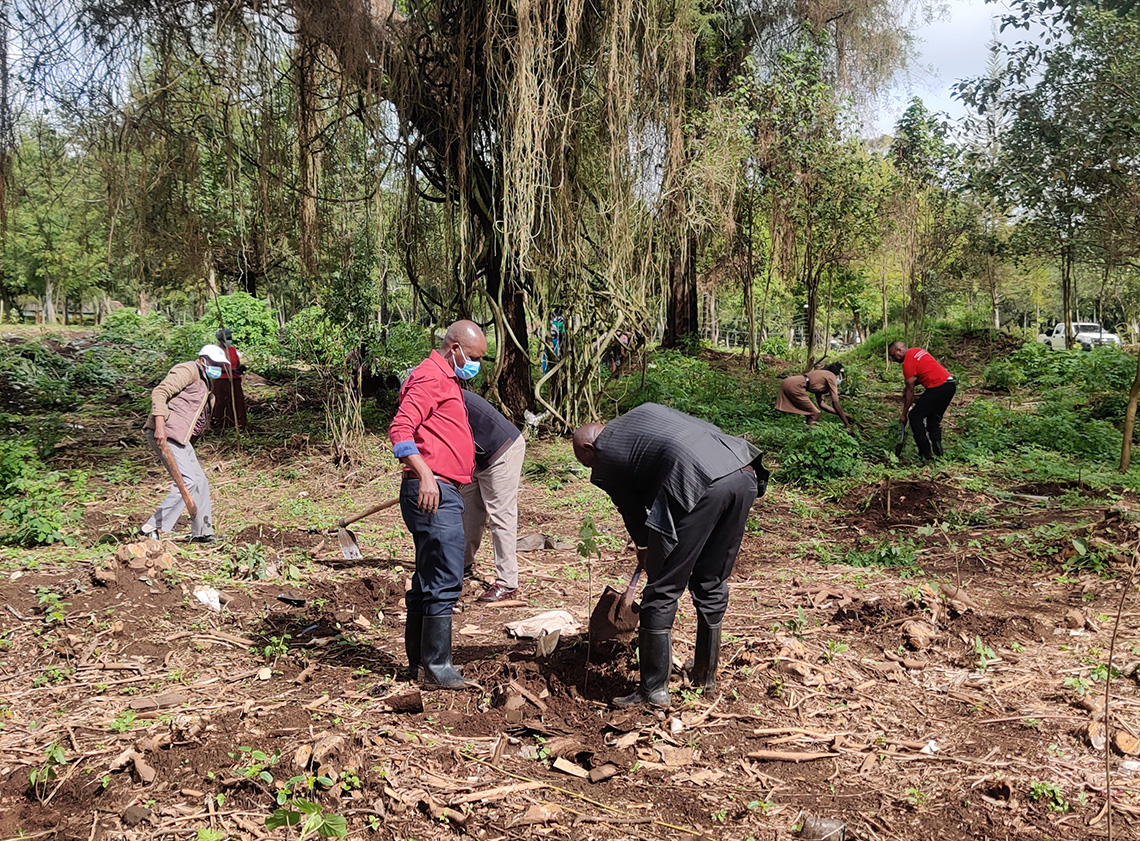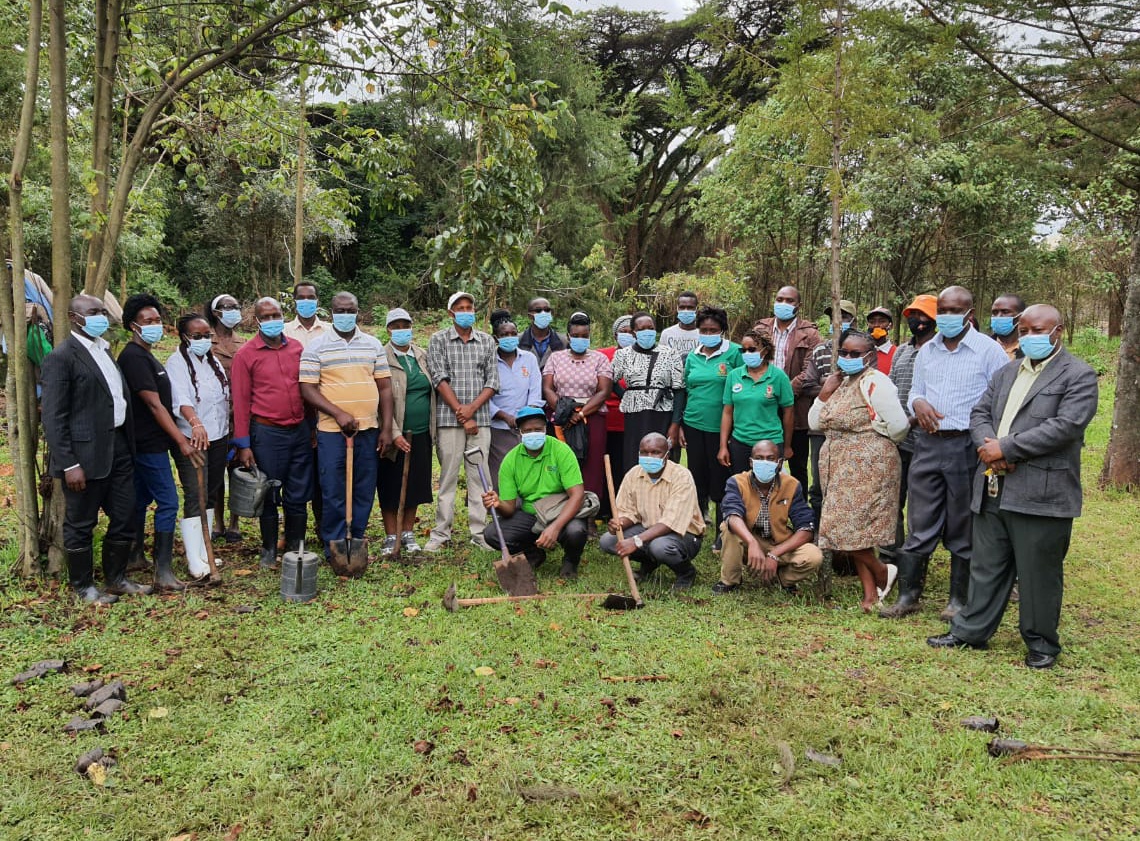The Division of Research & Extension today, 11 May 2021, planted 1,000 tree seedlings at Njoro Campus. Today’s session is part of the University’s continuous effort of environmental conservation as reflected in one of its core values, “Passion for environmental conservation.”
Trees and grass belts along water bodies, commonly referred to as riparian corridors or simply vegetated buffer strips, are important in stabilising streambanks, buffering of pollutants entering a stream from runoff, controlling erosion, and providing habitat and nutrient input into the stream. They also contribute to the balance of oxygen, nutrients, and sediment, besides providing habitat and food for fauna. It is due to these filtration functions that streams, and rivers are sometimes referred to as “kidneys of the earth”.
Climate change, coupled with rapid population growth, is likely to stress water reserves in Kenya. Kenya's Vision 2030 spells out the mechanisms of conserving all the water catchments in Kenya. Egerton University is mandated under Vision 2030 to conserve Njoro River, which emanates from Eastern Mau, one of the critical water catchments in Kenya. With the onset of long rains and in an effort to conserve this water catchment, the Division of Research and Extension together with members of staff from the Tegemeo Institute of Agricultural Policy and Development and the Directorate of International Linkages and Career Services, took part in a tree planting activity along the Njoro River. This is an annual activity and the target for 2021 was to plant 5000 tree seedlings along the river.
Nakuru National Park, which is home to thousands of flamingoes, wild animals, and diverse tree species. Close to 600,000 people depend on this river for drinking water as a source of livelihood. We call upon other stakeholders, notably the Kenya Wildlife Services and the Nakuru County Government, to plant more trees on the lower sections of this river to prevent loss of soils through erosion and maintain the water quality for the wildlife within the Nakuru National Park.
Coordinator, Njoro River Rehabilitation Project.








